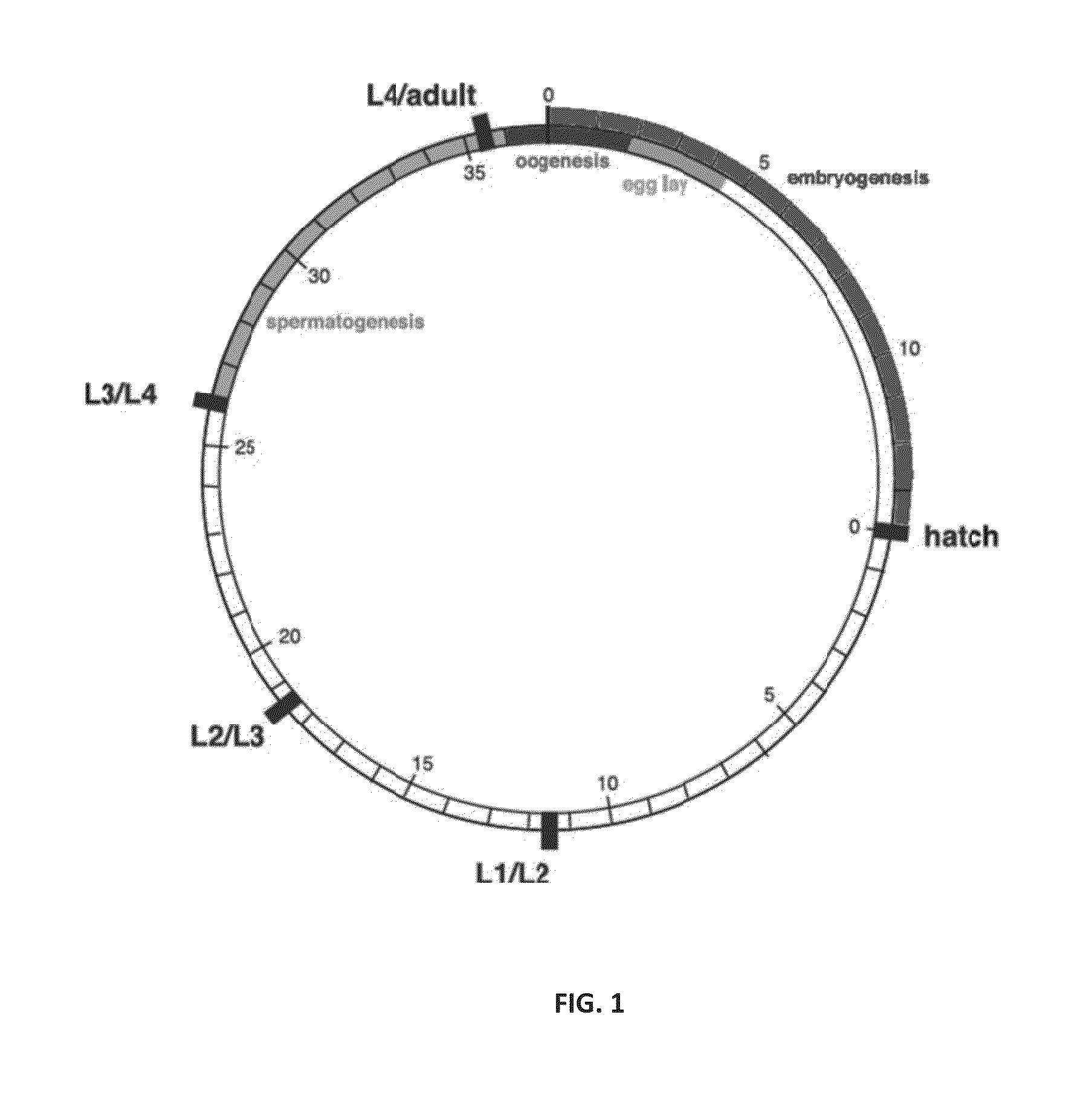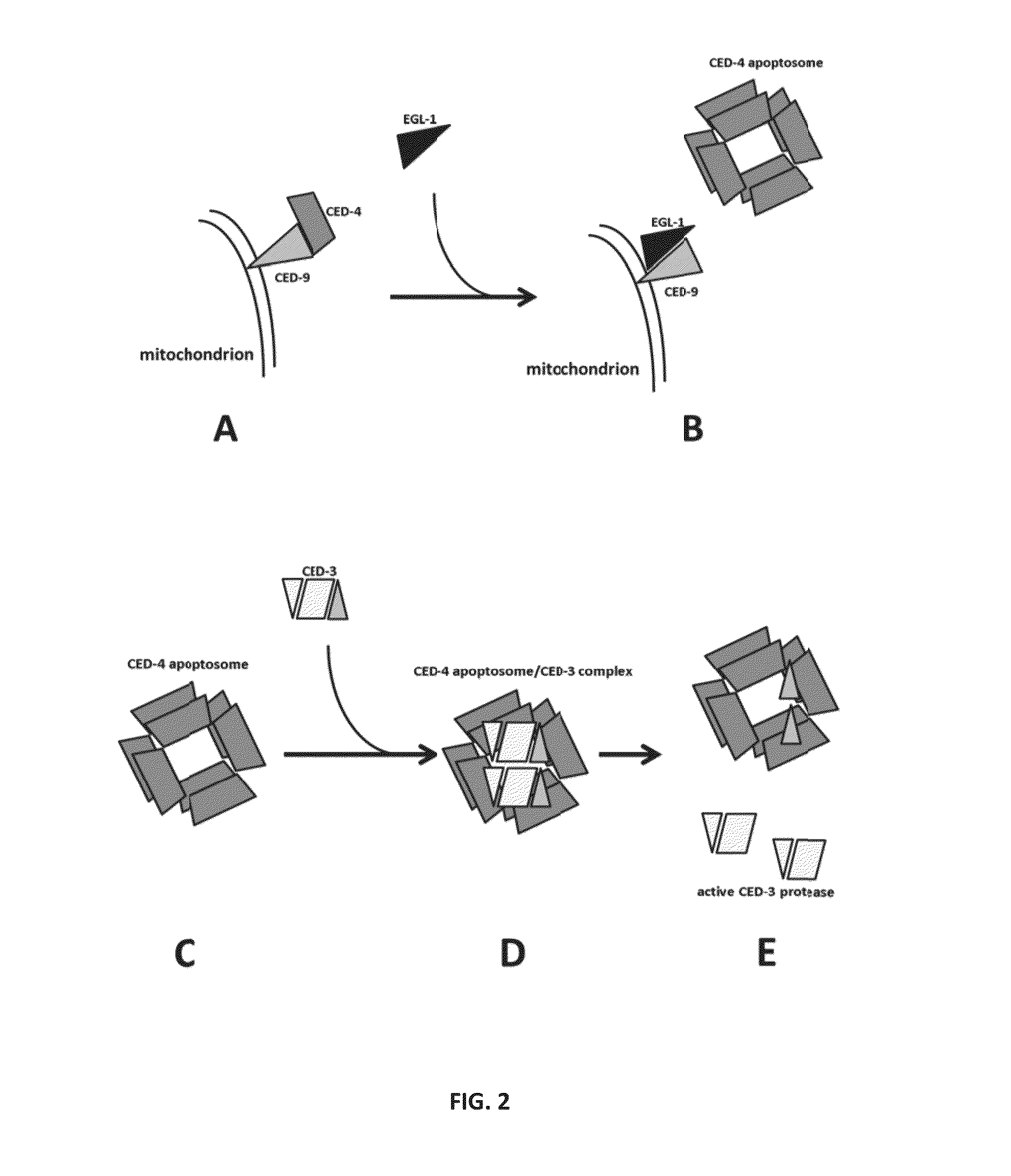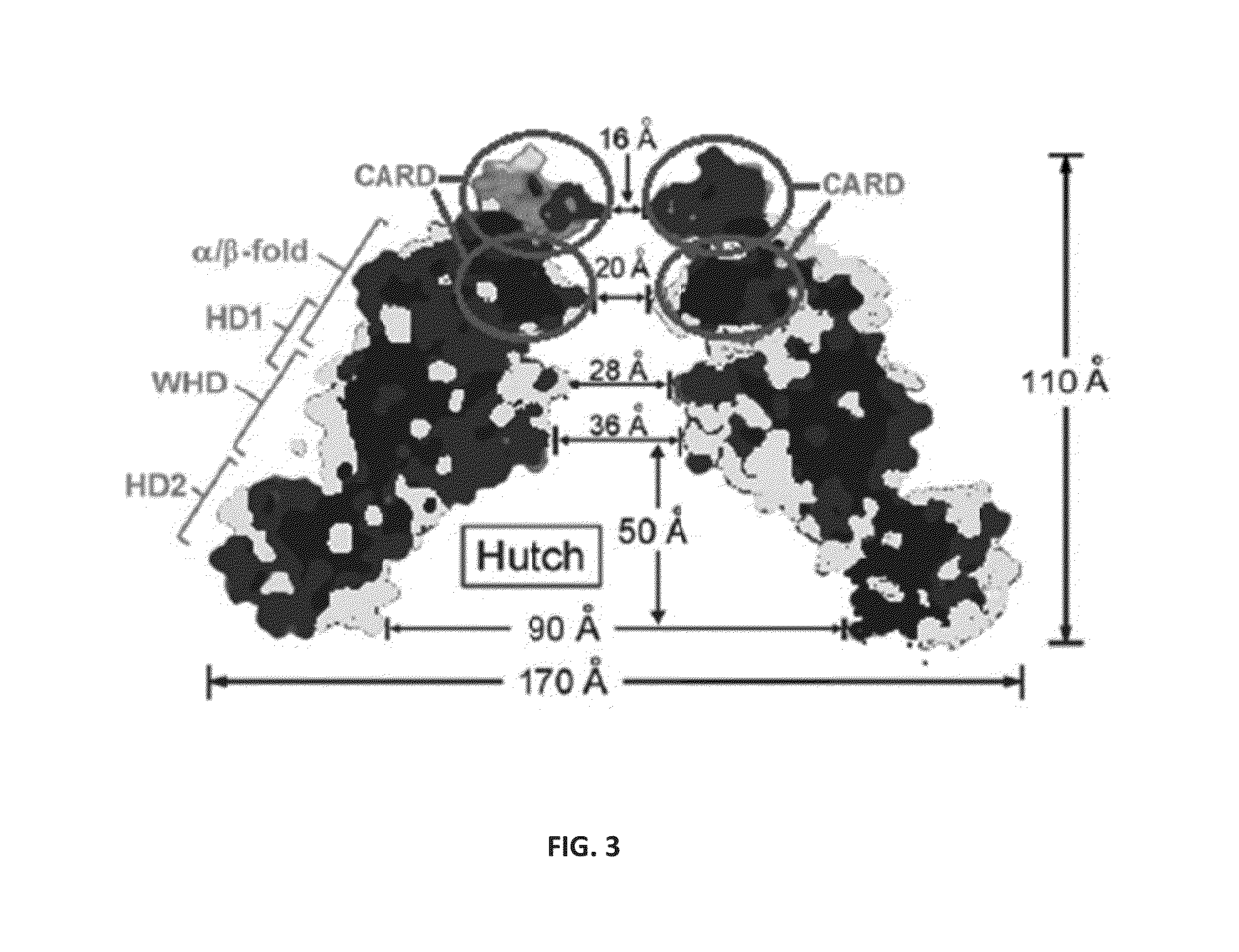Nematicide composition comprising CED-4 peptide
a technology of ced-4 and nematode, which is applied in the direction of biocide, peptide/protein ingredients, peptides, etc., can solve the problems of toxic chemicals, affecting the health of humans and animals, and possibly harmful to other beneficial microorganisms
- Summary
- Abstract
- Description
- Claims
- Application Information
AI Technical Summary
Benefits of technology
Problems solved by technology
Method used
Image
Examples
example 1
Nematicide Efficacy at 0.8 mg / ml Peptide Concentration
[0087]Assays were performed using 96-well plates. C. elegans nematodes at the L1 stage (refer to FIG. 1) were incubated in each of the 96 wells for three days at about 37° C. at about 0.8 mg / ml peptide concentration for each tested CED-4 peptide. Each of the selected CED-4 peptides were diluted in distilled water to 0.8 mg / ml peptide concentration. Nematodes—numbering between two nematodes and four nematodes—averaging about three nematodes were incubated in 100 μl of CED-4 peptide solution at about 0.8 mg / ml concentration in each well. After a three-day incubation period, the exposed C. elegans nematodes were checked for viability under a dissecting microscope. The nematodes that moved after being touched with a probe were considered alive, whereas the nematodes that showed no mobility after being touched with a probe were considered dead. The control solutions used were 0.8 mg / ml bovine serum albumin (BSA) (Sigma-Aldrich) and di...
example 2
Nematicide Efficacy at 0.4 mg / ml Peptide Concentration
[0098]In a second set of experiments, the designed CED-4 peptide concentration dispensed into the incubating wells was decreased from about 0.8 mg / ml to about 0.4 mg / ml to see if nematode mortality can be achieved with this lower concentration.
[0099]Assays were performed using 96-well plates. C. elegans nematodes at the L1 stage (refer to FIG. 1) were incubated in each of the 96 wells for three days at about 37° C. at about 0.4 mg / ml peptide concentration for each tested CED-4 peptide. Each of the selected CED-4 peptides were diluted in distilled water to 0.4 mg / ml peptide concentration. Nematodes—numbering between two nematodes and four nematodes—averaging about three nematodes were incubated in 100 μl of CED-4 peptide solution at about 0.4 mg / ml concentration in each well. After a three-day incubation period, the exposed C. elegans nematodes were checked for viability under a dissecting microscope. The nematodes that moved afte...
PUM
| Property | Measurement | Unit |
|---|---|---|
| concentration | aaaaa | aaaaa |
| optical density | aaaaa | aaaaa |
| temperature | aaaaa | aaaaa |
Abstract
Description
Claims
Application Information
 Login to View More
Login to View More - R&D
- Intellectual Property
- Life Sciences
- Materials
- Tech Scout
- Unparalleled Data Quality
- Higher Quality Content
- 60% Fewer Hallucinations
Browse by: Latest US Patents, China's latest patents, Technical Efficacy Thesaurus, Application Domain, Technology Topic, Popular Technical Reports.
© 2025 PatSnap. All rights reserved.Legal|Privacy policy|Modern Slavery Act Transparency Statement|Sitemap|About US| Contact US: help@patsnap.com



